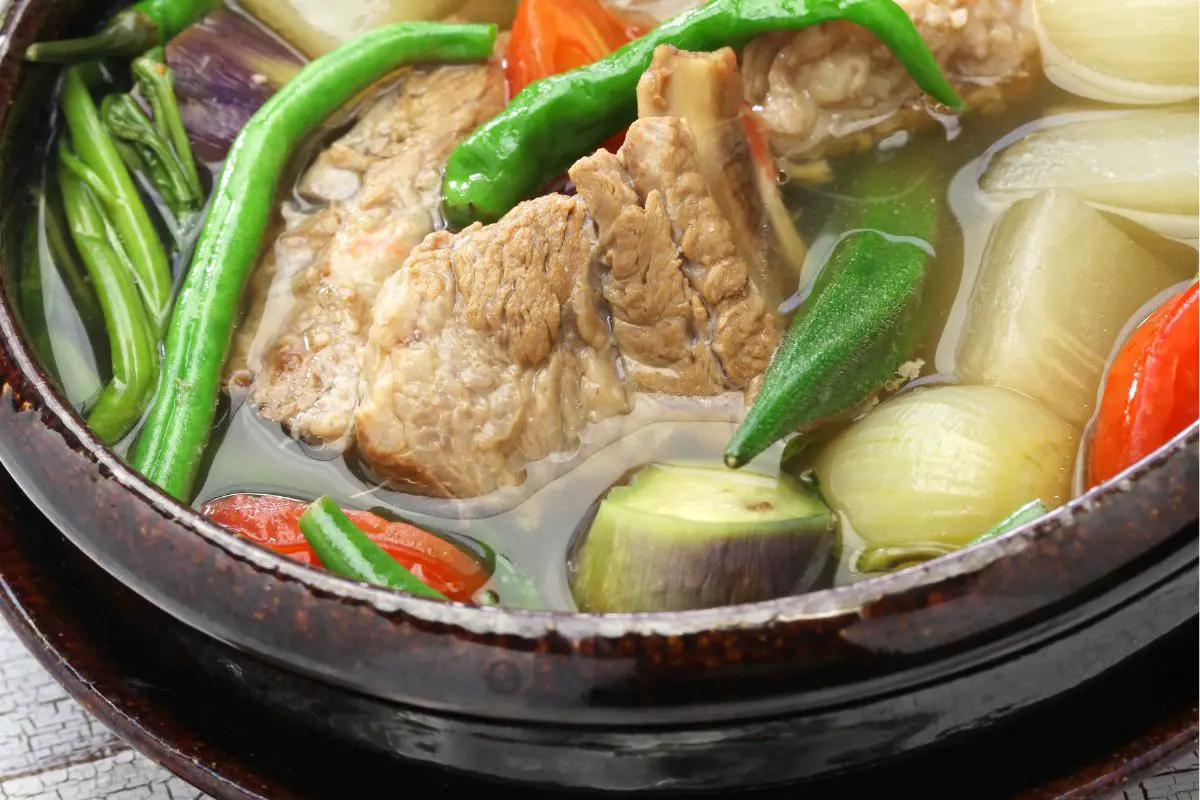Editor’s Favorites: Must-Try Filipino Food Recipes.
Editor’s Favorites: Must-Try Filipino Food Recipes.
Blog Article
Authentic Filipino Food Recipes to Attempt in the house
Discovering authentic Filipino food recipes presents a chance to value the complex tastes and social relevance behind each recipe. From the well-liked Adobo, with its savory marinate, to the tangy Sinigang that embodies the essence of Filipino comfort, these recipes welcome a much deeper understanding of standard cooking techniques. Utilizing fresh, regional ingredients is necessary, as is accepting public eating-- a characteristic of Filipino society. As we think about the crucial elements and methods that define these cooking treasures, one might wonder what particular dishes can really catch the heart of this lively cuisine.
Popular Filipino Dishes
Filipino cuisine flaunts a rich tapestry of flavors and traditions, with over a dozen famous meals that highlight the country's diverse cultural influences. One of one of the most popular dishes is Adobo, a full-flavored stew commonly made with hen or pork, seasoned in vinegar, soy sauce, garlic, and flavors. Its appetizing taste profile makes it a staple in Filipino households.
Another cherished dish is Sinigang, a sour soup typically made with tamarind, tomatoes, and numerous vegetables. This dish can include pork, shrimp, or fish, and its revitalizing preference is ideal for cozy environments. For those with a craving for sweets, Leche Flan-- a creamy sugar custard-- acts as a preferred treat, showcasing the Filipino fondness for rich, wonderful tastes.
Kare-Kare, a hearty oxtail stew with a thick peanut sauce, along with the iconic lumpia, or spring rolls, additionally exemplify the variety located in Filipino cuisine. Each meal not just provides special tastes yet likewise narrates of local components and historic impacts, making Filipino food a lively reflection of its society and heritage.
Vital Active Ingredients for Filipino Cooking
The significance of Filipino food preparation hinges on its essential active ingredients, which work as the foundation for the country's precious meals. A selection of tastes and structures collaborated, showcasing the varied cultural influences that form Filipino cuisine.
Secret components include rice, the staple that goes along with virtually every meal, signifying sustenance and area. Soy sauce, vinegar, and fish sauce (patis) are critical for flavoring, conveying umami and depth to meals. Fresh natural herbs like cilantro and basil include aromatic freshness, while garlic, onion, and ginger supply a durable taste base.
Protein sources such as pork, hen, and seafood are main to several dishes, typically marinated to boost taste. Veggies like eggplant, bitter melon, and green beans add necessary nutrients and balance - Filipino food recipes. Coconut milk is another substantial component, providing creaminess and a refined sweet taste to numerous stews and treats
Finally, calamansi, a citrus fruit, uses a revitalizing flavor that elevates dishes and beverages alike. Together, these active ingredients develop the dynamic and abundant tapestry of flavors that define Filipino food, making it both calming and distinctive. Recognizing these fundamentals is important for any individual seeking to replicate genuine Filipino recipes in the house.
Step-by-Step Dish Overview

Begin by preparing your active ingredients. For Adobo, cut the meat right into consistent pieces and season it in soy sauce, vinegar, garlic, and bay leaves click resources for at the very least 30 mins. Next off, heat oil in a frying pan and sauté the garlic and onions till great smelling, then include the marinated meat, permitting it to brown evenly.
For Sinigang, begin by steaming water in a pot and including your selection of meat. As soon as tender, include tamarind paste or fresh tamarind for that trademark sour taste. Adhere to with vegetables like radish and kangkong, food preparation up until simply tender.

Tips for Genuine Flavor
Often, attaining authentic taste in Filipino dishes depends upon the cautious selection and therapy of active ingredients. Begin with fresh, high-quality produce, as the vibrancy of vegetables and herbs considerably enhances the he said dish's general preference. Staples like garlic, onions, and ginger develop the aromatic foundation for lots of dishes; utilizing them in proper proportions is essential.
Choosing the best healthy protein is just as essential. For example, typical adobo often employs hen or pork, marinated to absorb the marinate's complete taste. In addition, think about sourcing in your area produced or regional ingredients, as they can offer authenticity that store-bought choices do not have.
Food preparation strategies additionally play an important function. Slow-cooking techniques, such as braising or stewing, enable flavors to combine wonderfully, while frying can add a rewarding texture. Do not forget flavoring; utilizing salt, fish sauce, or soy sauce at the right moments can elevate a meal substantially.
Serving and Enjoying Filipino Food
Culinary experiences are improved when Filipino food is served with focus to practice and area. The method of sharing meals is main to Filipino culture, signifying unity and hospitality. When offering Filipino meals, consider using standard serveware, such as clay pots or bamboo baskets, which improve the credibility of the experience.
Normally, Filipino dishes are appreciated family-style, with a selection of recipes positioned at the facility of the table. This public approach encourages communication and enables guests to example various tastes. A well-curated spread might include staples like adobo, sinigang, and lumpia, complemented by rice, which is a basic element of every meal.
Accompanying the food with standard spices, such as soy sauce, vinegar, or chili paste, can elevate the dining experience, inviting diners to personalize their plates to their preferences. In addition, integrating neighborhood drinks, like calamansi juice or tuba, can enhance the total taste account.
Final Thought

Report this page